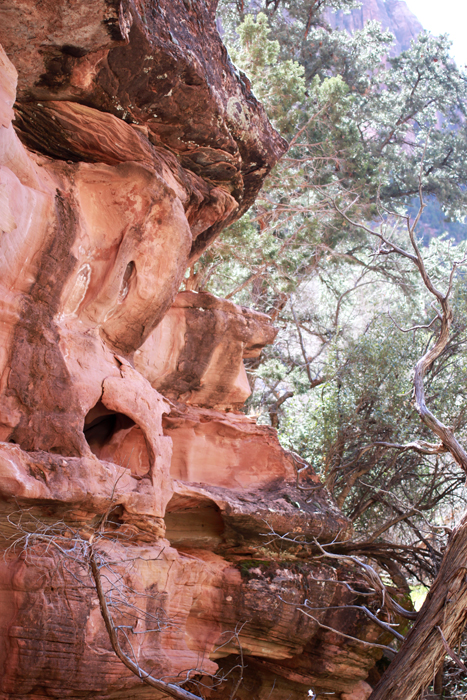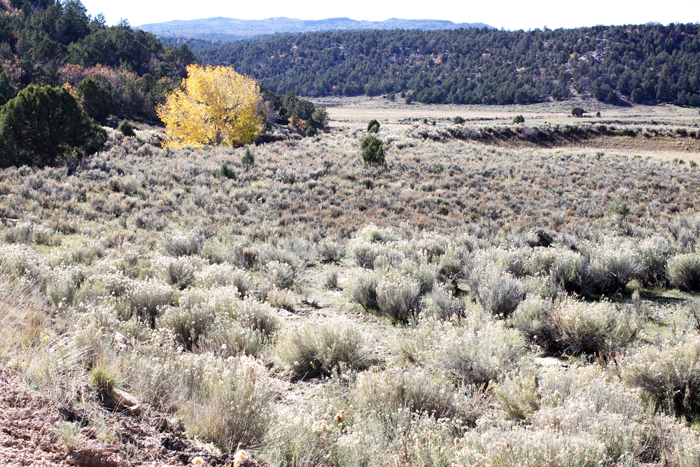This is Part Two of a comment sent to the Department of the Interior and the Bureau of Land Management for their Federal Coal Review. Although it relates to one county, Kane County, in southern Utah, it is relevant to the damage being caused by the coal industry throughout the U.S.
__
Destruction of wildlife corridors and wilderness
These public lands being considered for new coal expansion are right on a wildlife corridor that runs up through the Grand Canyon, through the Kaibab forest, through Kane County, Utah, and farther north on up to Canada. This is a key wildlife corridor for the annual mule deer migration, along with the animals that travel with them – including cougars and coyotes.
The western U.S. is one of the last remaining unspoiled areas on our planet. Even though in recent years, it has been heavily impacted and many areas have been damaged, destroyed and overrun by human activity, there do still remain some of the most extraordinarily beautiful natural lands anywhere on the planet.
Within a short drive of Kanab, Utah, there are several national parks, including Zion’s and Bryce Canyon. These giant towering red cliffs and amazing wilderness areas team with wildlife. They are places of wonder and great beauty, unmatched anywhere else on earth.
 Yet these unique, unparalleled wild places are being threatened by coal pollution and other fossil fuel extraction. The mysterious “hoodoo” rock formations of Bryce Canyon lie just ten miles from the site, near Alton, being proposed for more coal mining. Visitors to Bryce Canyon would no longer be able to look out over a clear vista of hills stretching all the way to the horizon, but instead would see heavy machinery at work destroying the lands below them.
Yet these unique, unparalleled wild places are being threatened by coal pollution and other fossil fuel extraction. The mysterious “hoodoo” rock formations of Bryce Canyon lie just ten miles from the site, near Alton, being proposed for more coal mining. Visitors to Bryce Canyon would no longer be able to look out over a clear vista of hills stretching all the way to the horizon, but instead would see heavy machinery at work destroying the lands below them.
Effects on our economy
These wild areas are also the most important resource for our local economy. In the state of Utah, tourism brings in far more revenue and creates far more jobs that does the coal industry.
If we preserve the natural environment, these areas will continue to be places of beauty for tourists and visitors who are drawn here from all over the world, on into the future. If these areas are ruined and destroyed, as is now happening, this will simply lead us to a dead end, with no future.
If we rely on a death-dealing industry, such as coal, instead of a life–sustaining industry such as tourism, then when the coal is gone, and when the coal companies have all gone bankrupt, as is already beginning to happen, we will be left with nothing. There will then be no jobs, no income, and no wild lands either.
The places of spectacular, unimaginable beauty will be gone, the wildlife, the trees, the lakes, and the streams will be gone – and nature, once it is demolished and eradicated, cannot truly be brought back, at least not for millions of years.
No fair return for nature’s destruction
I have read very carefully the entire text in the Federal Register of the requests for public comments, and I have understood that you are looking for specific kinds of comments. For example, you wish to know if we as taxpayers are receiving a fair return for the coal that is extracted from public lands.
I am not able to write the kind of comment you are looking for because, in my view, there can be no fair return for the destruction of the natural world. The earth, the forests, the rivers, the wildlife corridors, the canyon lands, and especially this incredibly magnificent area in southern Utah are priceless, invaluable treasures. No level of destruction of them should be allowed now or ever in the future, and no compensation could ever possibly be adequate.
We need clean energy
I would ask that you do whatever is in your power to make a just and speedy transition to clean energy. This will be possible by eliminating the hidden subsidies to the fossil fuel energy and by requiring existing coal and other fossil fuel companies to pay their fair share of taxes. With these hidden subsidies, estimated at around 19 billion dollars a year, eliminated, it will be possible to make significant investments in clean energy (also to bring about the technical innovations required for solar power to eliminate toxicity and, in the case of wind, to construct wind mills that do not cause bird deaths).
It will also be possible to provide programs and re-training for coal and other fossil fuel workers to join the new economy. These workers have worked hard to provide energy for us to heat and cool our homes and for us to have electricity, and they deserve a just transition. But coal is the energy of the past. Now it is time to move on.
If we wait and do nothing, the end of coal when it arrives will come with a jolt – like falling off a cliff. We will all – coal workers and all the rest of us – suffer greatly if we are caught off guard and are unprepared for this change. The time to move towards clean energy is now.
Other countries are already taking the lead in this. Saudi Arabia recently set aside two trillion dollars to move towards a new economy. Perhaps they are seeing something we haven’t yet looked at.
Clean energy is already, despite an uphill battle, making huge strides all over the world. It is now practical, feasible, and up and running in many countries.
It is time to value, protect, and care for the earth that we live on, to welcome new clean energy, and to move forward to a brighter, more stable and enduring, healthier future. That will be best for us as humans – and for all the innocent, amazing creatures with whom we share the planet.
Thank you for accepting our comments and for considering the future of our western wild lands over the decades to come – for the well-being of our country, all people, the earth, and the animals.
Thank you.
Sincerely,
Sharon St Joan
Kanab, Utah
__
To submit your own comment:
Email: BLM_WO_Coal_Program_PEIS_Comments@blm.gov.
(Comments on this issue to Secretary Jewell, the Department of the Interior, and the Bureau of Land Management are due July 28, 2016. Comments sent after this date will be considered as time allows.)
Or send in this message, which you may personalize, on the WildEarth Guardians website:
https://secure3.convio.net/wg/site/Advocacy?cmd=display&page=UserAction&id=830#.V4IFpcf0s1g
Thank you!
__
Proposed Alton Coal Mine – Key Points
Compiled by Jim Shelton, Wild Kane County
(These are some key points. Some of these points relate specifically to Kane County in southern Utah. They are also indicative of the kind of damage done by all coal mining everywhere. If you wish to use any of these points in a comment to send to the Federal Coal Review (please see above for the email address), please feel free to do that.)
- Dust Containment
Dust containment is nearly impossible. Covering coal can trap gasses, risking explosion. Dust from processing – mining through burning – contaminates the environment.
- Water Use
Coal processing uses enormous quantities of water; the Alton Coal Mine would use hundreds of thousands of gallons of water per year. Kane County is in a drought region. Alton is among our limited high altitude water sources.
- Water Pollution
Coal processing is highly polluting to water. 72% of America’s water pollution comes from coal plants. Processed water from a coal mine is contaminated and not easily disposed of without polluting the aquifer. We are all downhill/downstream from this aquifer. It is the source of half of our drinking water.
- Mercury contamination
Alton Coal has high mercury content. Mercury is highly toxic to life forms. Mercury disperses during coal processing into water and through dust released into the air. Later, mercury is released into the air during combustion, when used for power or heating.
- Fly Ash
Coal burning creates 140 million tons of fly ash in the US annually. A portion of the fly ash ends up in our water, air, and soil. Fly ash contains not only mercury, but several other carcinogenic toxins.
- Strip Mining
Strip mining is not allowed on most public lands, being too destructive to the environment. The ability to fully rehabilitate the landscape has not proved effective. Often naturally occurring heavy metals and other toxins lie under a thin layer of topsoil – particularly in mountain areas – releasing into surrounding soil and water during strip mining.
- Subsidies
Coal subsidies in the US exceed $100 million dollars annually. Subsidizing a process, which adds to the CO2 imbalance in the atmosphere, global warming, and pollutes land, air, and water, is the wrong direction for our future.
- Clean, Non-Combustible Energy Alternatives
To ensure a sustainable future, we need to look to sun, wind, and geothermal alternatives. Kane County has sites on private, state & federal land with great potential for these energy resources.
- Exports
The US has deemed this coal unmarketable for domestic use, due to high sulfur and mercury content. Ethically, we should not export this product and spread the pollutants to other continents. Toxins move into the ocean and atmosphere of the planet we share.
- Conserving Special Places
The mountains near Alton, UT are nearly pristine, a rare treasure in our world. They represent a small percentage of land area, but provide a large outlay of clean air, water, and a haven for wildlife. Strip mining coal to export to Asia seems a poor reason to destroy such habitat in our backyard. These resources are irreplaceable.
__
Photos:
Top photo: “No machine-readable author provided.” / Wikimedia Commons / “I, the copyright holder of this work, release this work into the public domain. This applies worldwide.” / A bobcat in California.
Second photo: Sharon St Joan / Red rock formations at Zion’s National Park.
Third photo: Sharon St Joan / Sage brush growing on BLM land near the Alton Coal Mine. Natural Sage Grouse habitat like this will be subject to destruction if new coal leasing is allowed on public lands.






